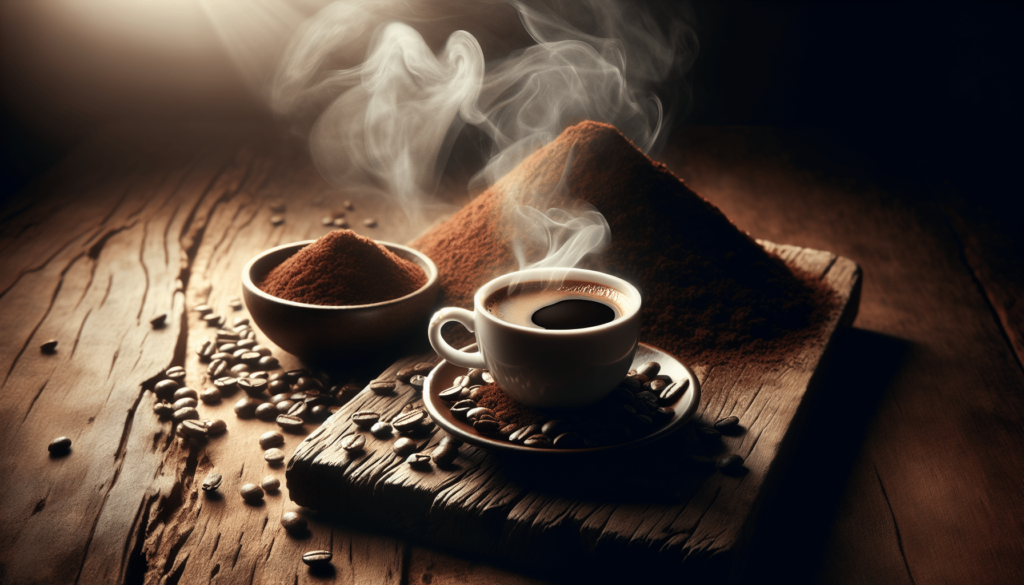What is the world’s best tasting coffee? If you’ve ever wondered about this, you’re in for a treat. Coffee is not just a drink; it’s an experience that varies across cultures, regions, and individual preferences. No two coffee experiences are the same, and the quest for the perfect cup is both delightful and educational.

The Origin of Coffee Beans
Coffee originates from various regions around the world, and the taste largely depends on where the beans are grown. Understanding the origin of coffee can help you identify your personal preferences.
African Coffee
African coffees, especially those from Ethiopia and Kenya, are often fruit-forward with complex flavor profiles. Ethiopian coffee, particularly from the Yirgacheffe region, is known for its floral and citrus notes. In contrast, Kenyan coffee is often vibrant with berry and wine-like flavors.
South American Coffee
South American countries like Brazil and Colombia are major coffee producers, known for their balanced and mild coffee profiles. Colombian coffee is particularly well-known for its smooth, medium-bodied taste with a hint of nuttiness and caramel. Brazilian coffee is often richer and fuller-bodied, with chocolatey and nutty flavors.
Asian Coffee
Asian countries such as Indonesia, Vietnam, and India produce coffee that often has deep, earthy flavors. Indonesian coffee, particularly from Sumatra, is known for its heavy body and low acidity with hints of chocolate and earth. Vietnamese coffee is unique with its strong, bold taste often enjoyed with sweetened condensed milk.
Central American Coffee
Central American coffees, like those from Guatemala and Costa Rica, are famous for their bright acidity and clean flavors. Guatemalan coffees often have a chocolatey, spicy profile, while Costa Rican beans are known for their balanced sweetness and vibrant acidity.
Specialty Coffee Regions
Some lesser-known coffee regions are also making a name for themselves in the specialty coffee world. For example, Panamanian coffee from the Boquete region is prized for its floral and fruity notes, often making it one of the most expensive coffees in the world.
The Journey From Bean to Cup
Understanding what makes a coffee taste exceptional also involves knowing the journey it takes from bean to cup. This process includes several crucial steps: cultivation, harvesting, processing, roasting, and brewing.
Cultivation and Harvesting
Coffee plants require a specific climate to thrive, typically found in the ‘coffee belt’ which is between the Tropic of Cancer and the Tropic of Capricorn. The ideal conditions include high altitudes and a temperate climate with rich soil.
Processing Methods
The method used to process coffee beans greatly impacts their flavor. Here are the most common methods:
| Method | Description | Resulting Flavor Profile |
|---|---|---|
| Washed | Beans are fermented and washed to remove the outer mucilage. | Clean, bright, and high acidity flavor. |
| Natural | Beans are dried with the fruit still on them. | Fruity, sweet, and complex flavors. |
| Honey | A hybrid of washed and natural, beans are partially de-pulped. | Balanced, with both fruity and bright notes. |
Roasting
Roasting transforms green coffee beans into the aromatic brown beans you grind and brew. Roasting profiles range from light to dark, each bringing out different aspects of the coffee’s flavor.
| Roast Type | Characteristics | Resulting Flavor Profile |
|---|---|---|
| Light | High acidity, retains most of the bean’s natural flavors. | Fruity, floral, and complex. |
| Medium | Balanced acidity and body. | Rich flavor with subtle caramel and nutty notes. |
| Dark | Low acidity, heavy body. | Bitter, smoky, with chocolate and spice notes. |
Brewing
The brewing method can also influence the coffee’s flavor. Popular methods include:
- Pour-over: Highlights the coffee’s nuanced flavors and aromas.
- French Press: Results in a rich, full-bodied cup.
- Espresso: Intense and concentrated, ideal for milk-based drinks.
- Cold Brew: Smooth and less acidic, often enjoyed over ice.
Factors Influencing Coffee Flavor
Various factors influence what you perceive as the “best tasting” coffee. These factors can include personal taste preferences, the origin of the beans, and the method of preparation.
Personal Preferences
Individual tastes vary widely. Some people prefer a light, fruity cup, while others crave a dark, robust brew. Understanding your own taste preferences can help guide you toward your ideal coffee.
Bean Origin
As previously mentioned, the origin of the beans greatly affects their flavor. Through experimentation, you can discover whether you prefer African, South American, Asian, or Central American coffee.
Freshness
Freshness is a major factor. Coffee is best consumed within weeks of roasting and days of grinding. Buying fresh beans and storing them properly can significantly enhance your coffee experience.
Water Quality
Water makes up about 98% of your coffee, so its quality can’t be overlooked. Using filtered water can improve the taste by eliminating any additives or contaminants that might overshadow the coffee’s flavor.
Grinding
The grind size should be appropriate for your brewing method. A too-fine grind for a French press can result in a bitter taste, while too-coarse grind for espresso may be weak and under-extracted.
Exploring World-Renowned Coffees
Several coffees have gained worldwide acclaim for their unique and exceptional flavors. Here’s a list of some of the most celebrated:
Jamaican Blue Mountain
Grown in the Blue Mountains of Jamaica, this coffee is known for its mild flavor and lack of bitterness. It’s often described as having a complex flavor profile with hints of chocolate and floral notes.
Hawaiian Kona Coffee
Produced in the Kona District of Hawaii, Kona coffee is renowned for its medium body, silky texture, and rich, aromatic flavors. It’s often described as smooth and buttery.
Panama Geisha
Panama Geisha (Gesha) coffee has gained fame for its intense floral and fruity notes. It’s considered one of the world’s most exclusive and expensive coffees, often fetching hundreds of dollars per pound.
Ethiopian Yirgacheffe
This coffee from Ethiopia is known for its bright, acidic flavor with a floral aroma and citrus notes. Yirgacheffe is a favorite among coffee enthusiasts who appreciate complex, tea-like flavors.
Colombian Supremo
Colombian Supremo is renowned for its well-balanced flavor profile, boasting notes of caramel and chocolate. It’s an excellent all-around coffee that appeals to a wide audience.

How to Brew the Perfect Cup
Brewing the perfect cup of coffee involves attention to detail and an understanding of the variables at play. Here are some tips to help you achieve coffee nirvana at home.
Measuring Coffee and Water
The general rule is to use one to two tablespoons of coffee per six ounces of water. Adjust according to your taste preferences.
Water Temperature
The ideal water temperature for brewing coffee is between 195°F and 205°F. Boiling water (212°F) can scorch the coffee, while cooler water won’t extract the flavors adequately.
The Right Grind Size
The grind size should match your brewing method. Here’s a quick guide:
| Brewing Method | Grind Size |
|---|---|
| Espresso | Fine |
| AeroPress | Fine to medium |
| Pour-over | Medium |
| Drip Coffee Maker | Medium |
| French Press | Coarse |
| Cold Brew | Coarse |
Brewing Time
The brewing time can affect the strength and flavor of your coffee. Here’s a rough guideline:
| Brewing Method | Brewing Time |
|---|---|
| Espresso | 20-30 seconds |
| AeroPress | 1-2 minutes |
| Pour-over | 3-4 minutes |
| Drip Coffee Maker | 5-6 minutes |
| French Press | 4-5 minutes |
| Cold Brew | 12-24 hours |
Enhancing Your Coffee Experience
To thoroughly enjoy your coffee experience, consider these additional tips:
Drink it Fresh
As previously mentioned, coffee is best consumed fresh. This means using freshly roasted, freshly ground beans, and brewing them shortly after grinding.
Experiment with Different Brewing Methods
Exploring different brewing methods can reveal new dimensions of your favorite coffee. You might find that a particular method enhances the flavors you love the most.
Try Single-Origin Beans
Single-origin beans can offer a pure taste of a specific region, allowing you to truly appreciate the nuances and unique flavors that different regions offer.
Use Quality Accessories
Investing in quality coffee accessories such as a good grinder, brewer, and filters can make a notable difference in the outcome of your coffee.
The Future of Coffee
The world of coffee is ever-evolving. With innovative brewing methods, sustainable farming practices, and a growing appreciation for high-quality beans, the future of coffee looks promising.
Sustainable Coffee Practices
With a growing awareness of environmental and ethical issues, sustainable coffee practices are gaining traction. This includes fair trade certifications, organic farming, and efforts to reduce carbon footprints in coffee production.
Innovative Brewing Methods
Modern machines like the AeroPress, pour-over gadgets like the Hario V60, and even cold brew systems are constantly being refined to offer coffee enthusiasts better and more consistent results.
Custom Blends and Flavors
As the coffee industry advances, so does the variety of blends and flavors. Specialty roasters are experimenting with innovative roasting techniques and unique blends to provide new taste experiences.
Conclusion
The quest to discover the world’s best tasting coffee is one of the most enjoyable journeys you can embark on. Understanding the origins, processing methods, and different brewing techniques allows you to tailor your coffee experience to your exact preferences. Whether you gravitate towards the fruity notes of an Ethiopian Yirgacheffe or the balanced sweetness of a Colombian Supremo, there’s a world of flavors waiting to be explored.
So, what’s the best tasting coffee in the world? The answer lies in your cup, waiting for you to discover it. Happy sipping!
